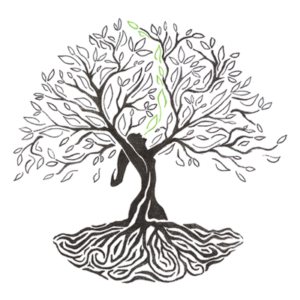How does our voice form? Our voice forms in connection with others — in relationship. As an infant, we cry out and in most cases, mother or father responds to that cry. We are communicating non-verbally with our voice, reaching out to another human being and being heard. We are in connection.
Donald Winicott 1896 -1971, psychotherapist, describes the mother’s voice (or father’s voice) as a “holding environment” that maintains connection with the infant. If the mother or father leaves the room and continues to speak or sing to the baby, the baby feels held in their non-verbal connection. If on the other hand, the mother or father doesn’t attend to their connection through voice, the infant may grow isolated and withdrawn.
Was your voice welcomed into the world? What were the messages that you received when you put your voice out as a baby, toddler, young child? What beliefs formed early on about expressing yourself freely in the world? Here are some common beliefs about voice that clients explore and transform in Movingvoice work.
Children are to be seen and not heard.
Speak only when spoken to.
You’re too big.
You’re too loud.
You’re too full of yourself.
You’re too much.
Do any of these sound familiar to you? These are familial and cultural norms — acceptable behavior. All too often, these messages rob us of our birthright – the right to speak.
An Exercise to Build Awareness of Core Beliefs:
Movingvoice draws on Hakomi Body Centered Psychotherapy, using mindfulness to observe one’s inner experience and access the wisdom of the body to heal.
I’m going to ask you to close your eyes, so you’ll need to read the directions before you begin. Or even better, have someone else do the exercise with you.
First, a brief explanation of mindfulness. Close your eyes and turn your awareness inside. Notice your inner experience. Observe your breath, sensations, feelings and thoughts just as they are. Please don’t make an effort to calm things down inside of you.
Next, I have four phrases that I’d like you to say gently to yourself, or better yet have someone speak the phrase out loud to you. The object here is to study your response, to notice the impact of the statement on your whole being, not simply to analyze with your mind. That can wait. The body holds crucial information for us to heal.
Begin by picking the phrase that has the most charge for you. Start with one phrase. You can stop there, or go on to do all four.
Your voice is welcome here.
It’s okay to be big and loud.
Your voice matters.
I like the sound of your voice.
After you deliver the phrase, take your time and notice what emerges on its own in response to it. Be patient. Often, a voice, a thought, a sensation or a memory will emerge that tells you something more about your core beliefs. You may find that you have a defensive response, such as; “No way. I don’t believe you. You’re making things up!” Or typically, the body tenses up, causing a tightening in the throat, jaw or solar plexus. Sometimes a painful memory surfaces, or an image comes to mind. Whatever emerges, take this opportunity to study it and learn. In some cases, the statement is received as nourishment and support. If so, drink it in!
The defensive, non-believing responses are parts of your Self whose job it is to protect you and keep you from getting hurt ever again. It could be time to acknowledge their hard work, and start taking steps to transform these beliefs — to step into the full power of your voice. It’s not always comfortable, but it will be a better world with your voice in it!

